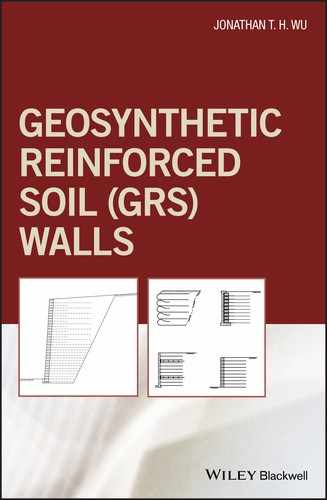Book Description
The first book to provide a detailed overview of Geosynthetic Reinforced Soil Walls
Geosynthetic Reinforced Soil (GRS) Walls deploy horizontal layers of closely spaced tensile inclusion in the fill material to achieve stability of a soil mass. GRS walls are more adaptable to different environmental conditions, more economical, and offer high performance in a wide range of transportation infrastructure applications. This book addresses both GRS and GMSE, with a much stronger emphasis on the former. For completeness, it begins with a review of shear strength of soils and classical earth pressure theories. It then goes on to examine the use of geosynthetics as reinforcement, and followed by the load-deformation behavior of GRS mass as a soil-geosynthetic composite, reinforcing mechanisms of GRS, and GRS walls with different types of facing. Finally, the book finishes by covering design concepts with design examples for different loading and geometric conditions, and the construction of GRS walls, including typical construction procedures and general construction guidelines.
The number of GRS walls and abutments built to date is relatively low due to lack of understanding of GRS. While failure rate of GMSE has been estimated to be around 5%, failure of GRS has been found to be practically nil, with studies suggesting many advantages, including a smaller susceptibility to long-term creep and stronger resistance to seismic loads when well-compacted granular fill is employed. Geosynthetic Reinforced Soil (GRS) Walls will serve as an excellent guide or reference for wall projects such as transportation infrastructure—including roadways, bridges, retaining walls, and earth slopes—that are in dire need of repair and replacement in the U.S. and abroad.
- Covers both GRS and GMSE (MSE with geosynthetics as reinforcement); with much greater emphasis on GRS walls
- Showcases reinforcing mechanisms, engineering behavior, and design concepts of GRS and includes many step-by-step design examples
- Features information on typical construction procedures and general construction guidelines
- Includes hundreds of line drawings and photos
Geosynthetic Reinforced Soil (GRS) Walls is an important book for practicing geotechnical engineers and structural engineers, as well as for advanced students of civil, structural, and geotechnical engineering.
